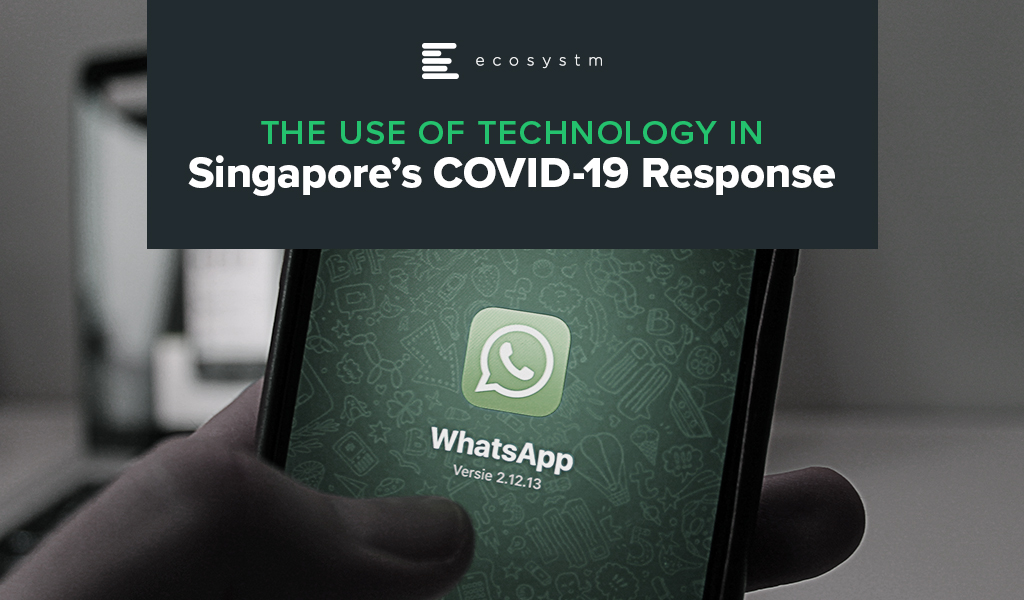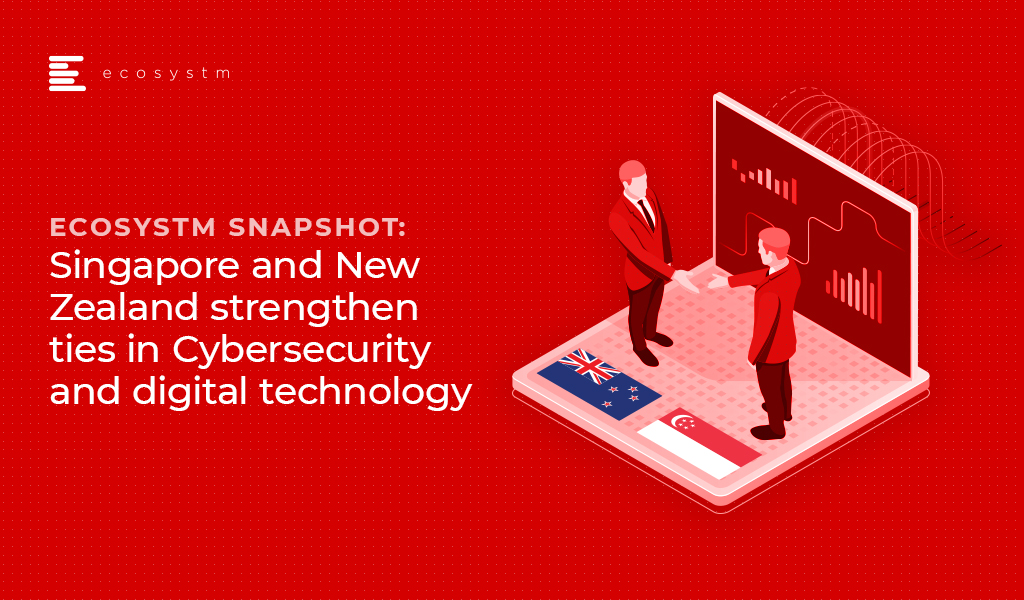
Authored by Mervyn Cheah, Aga Manhao and Sash Mukherjee
In January we wrote a blog on How Technology is Helping to Combat the Coronavirus – since then the COVID-19 outbreak has fast become a global threat, disrupting healthcare systems and economies. As the world struggles to contain the spread, Singapore’s response to the crisis shows how governments can use policies and technology to combat emergencies. While it is true that Singapore’s size is its advantage, and most of what it was able to do cannot be replicated in larger, more spread-out countries, there are still lessons there – in the simplicity and responsiveness of the measures. The threat is by no means behind us and the Government will need to implement many more policy changes in the near future. But it is worthwhile to look at what Singapore has done so far to contain the spread.
#1 Identifying and acknowledging the threat early
Like other Asian countries, Singapore suffered during the SARS outbreak in 2003. While the number of people infected during SARS was less at 238, at the end of the outbreak the country had recorded 33 deaths. Having learnt from that experience, Singapore knew that early response is key. Acknowledging the threat early allowed Singapore to have test kits made available to all major hospitals through the Agency of Science, Technology and Research (A*STAR). A*STAR is a statutory board under the Ministry of Trade and Industry, Singapore. The agency supports R&D that is aligned to areas of competitive advantage and national needs. By the time the first case was reported on 23rd January, health professionals were equipped with testing capabilities. Health authorities and biotech companies have continued to modify and launch newer testing technology – like the fast-track swab test kits launched in early March – as global research continues.
#2 Focusing on contact tracing
Right from the start, Singapore has been focused on contact tracing. Following the chain of the virus allows government agencies to identify and isolate people at risk, including their close contacts. This became more important as the virus spread into the local community with the first reported case on the 4th February. The contact tracing process has been a concerted effort using technology, manpower and dedication. As Singapore faces a second wave of spread from returning travellers, the Government launched Trace Together, an app that records distancing between users and the duration of their encounters. Individual consent is required to share the data which is encrypted and deleted by the Ministry of Health (MOH) after 21 days. This allows the MOH to contact citizens in the case of possible contact with an infected individual.
#3 Keeping the citizens in the loop
The speed in imposing border controls, meticulous tracing of known carriers and aggressive testing are all positive steps in combating a crisis like this. But arguably the most productive strategy was to get citizen buy-in. The need was felt most when the country’s Disease Outbreak Response System Condition (DORSCON) level was raised from yellow to orange on 7th February. With the raised DORSCON level, buildings and public facilities with a high volume of people were required to do fever screening and collect personal details for further communication and alerts, if required. Simultaneously, the Government started sharing clear, transparent, daily public communication through mobile phones. The messages contain anonymised details of the patients (to make people aware of their own possible exposure), as well as an update of the number of patients being treated and released. The 2 deaths were also reported promptly – but enough details were shared to avoid panic. Demonstrating cross-agency collaboration, the information disseminated comes from multiple government agencies – the same channel is also used to drip-feed hygiene guidelines and the evolving government policies on travel, trade and so on.
The message from the leadership has also been clear and timely, and an economic stimulus package was announced fairly early. The Government is currently working on a second stimulus package, as the threat to the economy continues.
#4 Dispelling misinformation
Taking this daily communication to the next level, the Government has been prompt in stopping the spread of rumours. Not only does the MOH website share all the latest details, any spread of misinformation (usually through social media) is being quelled by official statements. It is extremely important to be able to address issues such as these, because it impacts trust in the government and the healthcare system. The daily updates are now a ‘single source of truth’ on all COVID-19 related information. The Cyber Crime Portal has also been activated with the intention to track unverified messages especially regarding the treatment and cure of COVID-19.
#5 Empowering healthcare professionals and citizens with digital tools
Unfortunately, the community spread appears to be happening in waves, especially as Singapore has a high volume of returning travellers. Healthcare facilities continue to be stretched. Although Singapore has adequate healthcare facilities to cope with the number of current cases, the Government is also prepared with additional quarantine facilities. Meanwhile, hospitals have set up makeshift triage centres in their car parks to deal with the growing number of patients needing to get tested. To counter the need for more infrastructure and the cost to get additional facilities ready, the use of digital health, remote patient monitoring and online care planning is being explored to limit patients presenting themselves to providers. KK Women’s and Children’s Hospital has launched UPAL – Urgent Paediatric Advice Line – as a pilot online consultation channel. It is expected that more healthcare facilities will offer services such as these. Being cloud based, these solutions can be deployed within days and high-risk patients can be immediately onboarded, easing the burden on the healthcare system and providing relief to patients and families. Telemedicine and remote monitoring are not new, having been proven and tested by several healthcare systems. In these extraordinary times, technology will help the healthcare system keep all in Singapore safe.
#6 Having a strong Data and Digital infrastructure
Singapore’s data and digital services infrastructure is the overarching factor that has allowed the Government to act quickly and efficiently to fight this community threat. While this is not linked directly to the current response measures against COVID-19, it is the true enabler. Firstly, the electronic health record system has access to records of all patients who have availed of the public healthcare system (private, primary care organisations have also started contributing to the system – enabling the vision of complete longitudinal health records). This is the backbone of the Government’s healthcare measures in these difficult times. Secondly, the network infrastructure allows the introduction of online consultation services. Moreover, people are able to work from remote locations seamlessly using collaboration tools such as Zoom, Skype and WebEx. This allows the Government to encourage people to work from home, to stay away from healthcare facilities and other measures to reduce overcrowding of public spaces to prevent the spread. And finally, Singapore has a strong access to eCommerce and online platforms, allowing people to access almost anything they choose to, online.
While the battle against the pandemic is far from over, Singapore has so far managed to avoid complete disruption by using technology to be responsive to the community’s needs.







